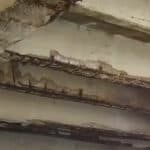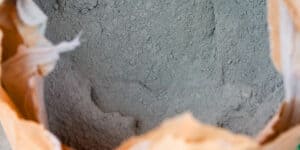This podcast segment is extracted from the opening of a webinar held in June 2019, with Dr Jon Belkowitz of Intelligent Concrete. The webinar was titled Steel Corrosion in Concrete; it touches on the science of how reinforcing steel corrodes, and why we care about this.
Steel Corrosion in Concrete

Invisible Strength
Steel Corrosion in Concrete
/
RSS Feed
Steel Corrosion in Concrete
Dr Jon Belkowitz PhD. PE. – LinkedIn linkedin.com/in/jon-belkowitz-phd-pe-53494719
Intelligent Concrete intelligent-concrete.com
The full webinar youtu.be/Je25pnSZBT0
View the Transcript
NARRATOR: G’day everybody, and welcome back to another segment from MARKHAM’s Invisible Strength podcast series. Today’s segment is extracted from the opening of a webinar held in June 2019, with Dr Jon Belkowitz of Intelligent Concrete. The webinar was titled Steel Corrosion in Concrete; it touches on the science of how reinforcing steel corrodes, and why we care about this. This segment shares the first quarter-hour or so, and we will be sharing further segments over the next couple of weeks. You can find the YouTube link to the hour-long webinar, in full, in the notes on our podcast page.
. . . . .
DOUG: Welcome, everybody, to this webinar hosted by MARKHAM with our guest speaker, Dr. Jon Belkowitz. Today’s seminar is on the corrosion of reinforcing steel in concrete. We’re going to take a look right back to the basics of why it actually happens, and what are the effects of it when it happens in concrete, and then what are the technologies available to help us deal with it? In particular, we’re going to take a look at the colloidal silica hydrogel.
I’ll hand it over to Dr Jon Belkowitz now, and he will introduce himself and then continue with this presentation. Over to you, Jon.
JON: All right. Thank you very much, Doug. Pleased to meet you all. It’s a pleasure to be here. I’m actually not in New Zealand. I’m in beautiful Colorado in the United States of America, and it is 4pm here on a bright, beautiful summer day. I’m shutting off my webcam just so we can create a better presentation environment.
So let’s start this off. Okay, like Doug said, welcome to the presentation. What we’re going to be going over today is managing corrosion of reinforcing steel with colloidal silica hydrogel technologies. What I’d like to do first, before we get into the meat of the presentation, is to give you a quick overview of what we’re going to be talking about today.
First and foremost, an introduction of who I am, who I work for, and what I do for a living. Outside of that, we’re going to get into the purpose of this presentation. There are three big-ticket walkaway items that I want you to be able to answer at the end of this presentation. After that, we’re going to get into the meat of the presentation, which is defining corrosion of reinforcing steel, and then looking at hydrogel technologies, and then, of course, combining the two. Why do we care? Why are we sitting on this presentation? After that, I’ll wrap it up with a concise summary, and then open up the floor for any questions.
So like Doug said, I love concrete. My name is Dr Jon Belkowitz. I’m the Director of R&D at Intelligent Concrete, where we specialise in making your concrete stronger and last longer, saving the world with all the concrete in it. When my wife and I created this company, what we wanted to do is bring what we understood about commercial technology or commercial laboratory’s real-world concrete with what we’ve seen in university basements, and ultimately connecting the “BookCrete” to the “LabCrete” to the “RealCrete”. Ultimately, that’s what we do for the industry. We’re technical representatives and liaisons who bring those new and emerging technologies to the industry on a very altruistic level. We talk about the basic understanding of the science and how it’s going to benefit concrete.
That’s why we’re here today, and that’s what I want to focus on today. So that really dives into the purpose. The purpose of our presentation today is, there’s three things I want you to walk away with. One: what is corrosion of reinforcing steel? Now I don’t mean for you to be an expert in it, but I want you to understand some of the basic science. I am going to leave a lot of the technical mumbo jumbo out, but I want you to understand the basic science of it. Because with that understanding of the basic science, you’ll see how the colloidal silica hydrogel technology will effectively manipulate the concrete to create a greater service life, or concrete with greater steel corrosion resiliency. So after we go over the corrosion of reinforcing steel, then we’ll look at the hydrogel technology and the basics of it. Then finally, we’ll attach the two: why do we care about hydrogel technologies with reinforcing steel?
So with that, we’re going to go ahead and jump into why we’re here today. There are 600,000 concrete bridges in our national industry here in the US, establishing a $48 billion a year industry. Of that, $8.3 billion of money is put back into those concrete infrastructure every year to deal with the maintenance associated with physical and chemical attacks.
Now, this is the “Why do we care?” The unfortunate reality is, that when mild steel or any type of steel is exposed to a wet environment in a standard temperature, we’re going to see rapid corrosion, especially if there’s chlorides present. The reason why we care about it is because unless special precautions are taken, the life of most structures – from bicycles to bridges, from buckets to battleships – is limited by the wet corrosion that goes for this reinforced concrete that we see in front of us. Now, the annual bill in the United Kingdom for replacing corroded components, or preventing steel corrosion, is somewhere around £4 billion or $7 billion US.
This happens whether or not you’re in a marine environment with our brackish water, fatigued from flash and tidal zones. Ultimately, this abrasive wear from the tides and the impact of the chemistry of the seawater, it creates what we see in front of us right now: this reduction in the service life of a concrete structure. It doesn’t have to be in just the marine environment. It can also be in your car parks. Any place where we have dynamic loads, where we have abrasion from traffic, and then we also have some water from vehicles, we can create the environment for steel corrosion. So again, with our car parks, you might not have the brackish and seawater directly. But indirectly, that water, or just water itself, can come from either rain or from cars. Then with all the dynamic loads and the cracking, we can get that breakdown of the concrete and that bleeding of the concrete from steel corrosion.
So let’s get into the science of reinforcing steel. Again, I want to go over the basics of it and why it’s important. So in the operational world, this is what we see. We see a concrete structure; this is a decking over brackish and marine water. We can see that the chlorides in the water have really eaten away at the steel through the concrete. Of course, the steel has expanded, causing the concrete to pop off. Ultimately, that structure is slowly deteriorating, shortening its design service life. This is the operational world.
This is the rudimentary world that we live in, where we have a rudimentary diagram showing what the concrete system that we’re looking at looks like. Ultimately, we have a concrete decking that relies on concrete beams and columns to support not only the dead weight, or the permanent load, but the live or dynamic loads that go across that decking, whatever it’s going to be used for. So ultimately, we’ve got to make sure that all that concrete is densified, so that the steel is going to be stronger and last longer.
Why do we care about steel? Inherently, all of us know that concrete is poor in tension. When you squeeze concrete, it’s very strong. But the unfortunate reality is, concrete is very weak in tension. If you look at ACI 318, or the Universal Building Code, there are certain values or certain equations that assume that the tensile strength of concrete is about 10% of the compressive strength. So when we build these concrete structures, we put reinforcing steel where it says moment reinforcement and shear reinforcement, within the concrete, to take up those tensile and shear loads that would cause catastrophic failure. That’s looking down the cross-section of those beams that would hold up that decking.
A cross-section looking down the beam. Again, what we’re seeing is, you have steel on the top and steel on the bottom. Those are going to be your tensile-carrying steel members. Then what we’re not seeing here is our shear reinforcement. Those are called stirrups, and they’re like these U-shaped members. But again, you don’t have a lot of concrete. It’s two inches of concrete that’s covering up the steel on either end. So if there’s any deterioration from those dynamic loads – or from freezing and thawing, or just from the placement of the concrete – and we create a porous environment on those two inches, we can start creating those vicious deterioration cycles.
This is why we care about all this. Because again, that concrete is going to support. When we look at a steel beam, it kind of smiles, where the top portion of the beam is at the top of the smile (it’s been compressed), and the bottom of the beam is at the bottom of that smile (it’s in a tensile state). So again, we need a certain amount of steel to take up that tensile load. If there’s a lot of it, we have this double reinforced section. But again, once that steel starts failing, we go from a concrete structure that has running room to it, to a concrete structure that’s going to catastrophically fail. So we want to stay in this tensile failure where there’s running room, and we can start seeing the structure fall apart. We don’t want to go to this catastrophic failure where it, all of a sudden, falls down without a warning sign.
All of this relates back to corrosion. This is that cross-section again, I’ve turned it grey for concrete and brown for our steel. We’ve got to take a closer look when we’re talking about steel corrosion. Because steel corrosion doesn’t occur just on a macroscopic level; that’s almost the after-effect or the secondary effect. It occurs at a micro-level. So not only do we have to look at the steel at a macroscopic level, we also have to look at a microscopic level and go down to the interface between the steel and concrete. Now don’t forget, within our concrete, there is an excessive amount of water.
So let’s focus on that point where the water, concrete, and steel intersect, and we’re left with this: this abraded ion section, this steel with aerated water interface. The reaction that we’ve got going on here, first, we start on our bottom left-hand corner where we have iron atoms that pass into solution in the water. So you see on the bottom, those two electrons with the iron that leave the left, and they transport this iron oxide to the right into this aerated water. The second part of that is, they are conducted through the metal to a place where the oxygen reduction reaction can take place to consume the electrons. That’s going up to that oxygen plus our four electrons to give us our hydroxide there. Then from there, this reaction generates our hydroxide ions, which then combines with our iron ions to form hydrated iron oxide. But instead of forming on the surface – because it can just form on the surface – it can also form in other different phases. These are based on three cases.
So there’s three types of this reaction that are going on: it’s either going to form in this aerated water around the concrete or within the concrete, or it can form at the interface between the iron and the water, or it can form at the interface between the iron and the rust itself. Over time, what we see happening is, that rust layer or that passivation layer starts increasing until we finally get this protective layer.
Now if we were to stop time right here, this would be great. I really want you to hear that for a second. Because not all corrosion of steel is bad; we want that initial corrosion, and we want to create that protective layer. But then what we want to do is to protect that protective layer. Because once we de-passivate that protective layer, once we break down that rust, it has to occur again to protect the steel. It’s going to occur again, especially if we have water and ions present.
So I do want to spend a few minutes going into, What is a colloidal silica hydrogel technology? But remember, what I want to go back to is, Why do we care? Now that we know that steel corrosion is exacerbated by the transportation of water and ions, what we want to try to do is limit the migration of water and the migration of ions into concrete. You’re going to see here in a little bit how we can do that with colloidal silica hydrogels.
. . . . .
NARRATOR: So that’s it for today, keep an eye on our Invisible Strength media site for more segments to come!
Want to Contribute?
Feedback on our podcasts? Suggestions for future topics? Looking for more information on topics we’ve discussed? Send us a message – we’ll be in touch within a day or two.
More about MARKHAM
MARKHAM are dedicated to providing innovations for concrete and construction. Focusing on concrete waterproofing solutions, penetrating concrete sealers and durability treatments for concrete.
Podcast Categories
Latest Episodes

The Electric Vehicle of Cement Making
We’ve talked about this in other places, but cement manufacturing is a real problem child

Starting Good Conversations
Have you seen those colourful Trademutt shirts on site? They’re a conversation starter! This is

Lessons in Infrastructure Remediation
In this very practical segment, Mike shares pointers from his past experience in infrastructure remediation.
invisible strength podcast
The whole MARKHAM team is pleased to present you with our podcast series, INVISIBLE STRENGTH. In this series of interviews, we’ll walk through the science and challenges of concrete durability, what goes wrong in the field – and the advanced methods available to restore and enhance service life to concrete construction.
INVISIBLE STRENGTH reflects a number of factors in concrete construction and durability. When things go wrong, the evidence can become very visible indeed. However, when all is going well, there’s nothing particular to be seen!
MARKHAM’s concrete treatments, too, are invisible once completed – and the result is the long internal, invisible durability of the concrete.
So join us as we explore the unseen world inside concrete – why it matters, and how it can be protected!
Stay Connected
Listen and subscribe to us on your favourite podcast platform, we're always adding new episodes!
Invisible Strength – The media site for MARKHAM – Adding Life to Concrete.
At MARKHAM, we’re on a mission to transform concrete and construction. Our Purpose? ADDING LIFE TO CONCRETE.
From innovative waterproofing solutions to penetrating hardeners and sealers, our focus is clear: to reinforce concrete structures and make them withstand the test of time.
Newsletter
Sign up for email updates on the latest collections, campaigns and videos.

